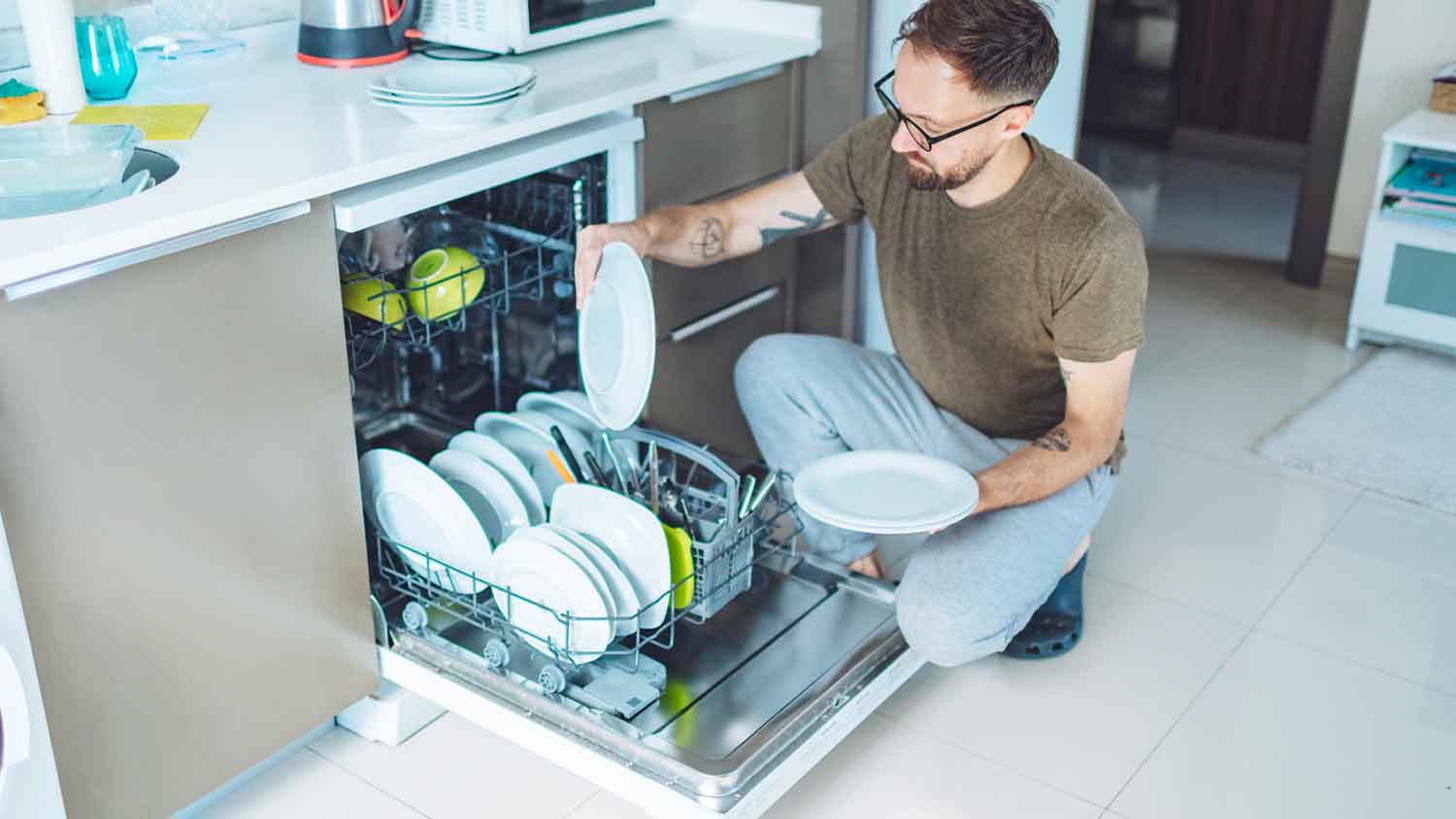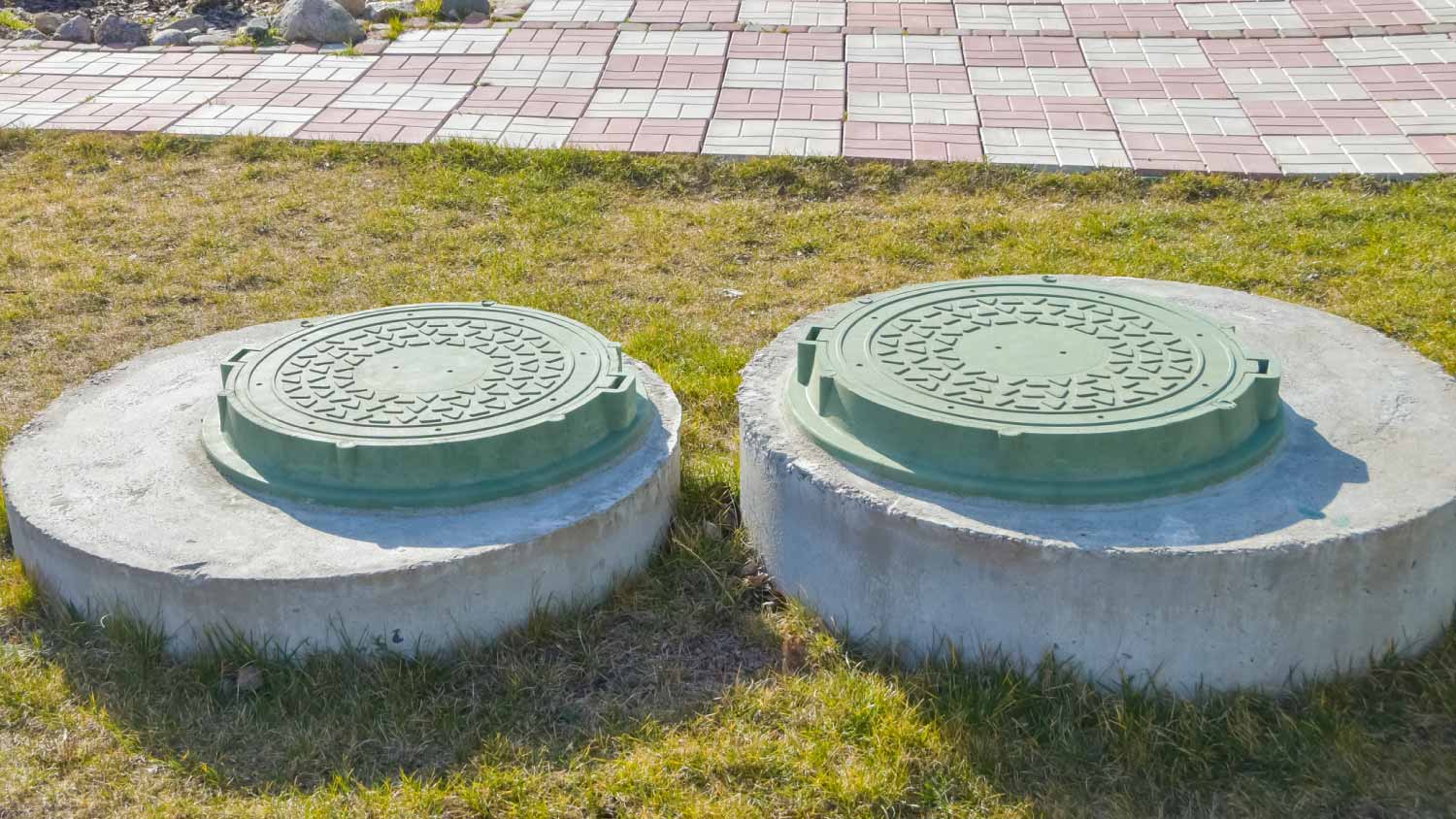
You should do a septic inspection once every one to three years to ensure you don’t have any issues. Learn about septic inspection costs before scheduling.
Move things along with this easy project


When bacteria levels in your septic tank are low, you can experience backups in your septic system, which can be hazardous (and smelly). Without bacteria to break down the solid waste, the tank fills up more quickly and the pipes can get clogged. Learn how to increase the bacteria in your septic tank naturally with rotten tomatoes or yeast. The best part? Boosting the bacteria takes five minutes or less.
The natural bacteria in your septic tank breaks down solids, helping ensure your tank doesn’t become full too soon. Natural bacteria also help ensure your septic tank's health and balance pH levels. Without enough natural bacteria, you’re more likely to experience clogs or the need to pump your septic tank more often than usual.
The cost to pump a septic tank ranges from $250 to $550. You can avoid additional pumping by maintaining healthy bacteria in your septic tank. Most septic tanks need to be pumped once every three to five years to keep everything running smoothly.
As a repeat customer, I can say that Billy never fails to deliver great customer service at a great price. He is honest and knowledgeable. We had an issue with our sewage exit drain pipe after record rain. He diagnosed the problem and fixed it. After the hole was dug he also noticed what could be another issue and upon further uncovering, he was 100% correct. Our pipe was semi disconnected just a bit further down the line. Taking care of that problem too while the hole was open saved us money and headaches! Our system is up and running well and the price was more than fair. If you want an honest, knowledgeable contractor, hire Amos!
If bacteria levels in your septic tank are too low, you may experience:
Your tank filling up sooner than every three to five years
A septic or rotten egg smell outside of your home or coming from your drains
Slow-draining toilets and sinks
Backed-up drains and toilets
Lush, green grass near your tank or above the septic lines
Standing water in your yard
Two main ingredients can increase the natural bacteria in your septic tank: rotten tomatoes and yeast. Rotten tomatoes are known to work better than yeast, but adding yeast may also help. Septic tank experts recommend avoiding septic tank additives, as they can harm your system more than help it.

Decaying tomatoes can increase bacteria in your septic system by breaking down pectin and plant cell walls.
Buy three rotten tomatoes and allow them to go past their prime. Put them in your garbage disposal one at a time and run the water while you run your garbage disposal. Allow the garbage disposal to process the tomatoes and pass them through fully. You can add rotten tomatoes to your septic system every three months as needed.
Some experts recommend adding yeast to your septic system to increase enzyme health in your septic tank. Whether yeast increases bacteria is debatable, but it won’t harm your septic system.
Pour 1/4 ounce of dry baking yeast into your toilet and flush. You can do this once every three months or up to once per month. Avoid adding extra yeast to your septic system, though, as it can cause frothing. The additional gases from the yeast can keep solid waste from settling to the bottom. When the sludge doesn't settle, clogs and slowdowns can happen.
To allow the bacteria to work properly, ensure you take care of your septic system. Proper maintenance prevents backups, clogs, and malfunctions.
Sending grease, fats, trash, feminine hygiene products, wipes, and cat litter down your drain or toilet can cause major backups and clogs. Place these items in the trash instead.
Harsh chemicals and bleach can kill the organisms in your septic system that break down solid waste, so be sure to safely dispose of them elsewhere.

Reducing the amount of water your home uses can lower the chance of a septic tank backup. Conserve water by limiting the length of your showers, using a dishwasher, and choosing low-flow fixtures.
Placing plants with deep root systems near your septic system can disrupt your drain field. Work with a local septic tank pro to decide on the right septic tank landscaping.
Switch to natural cleaning products and soap, as chemicals, bleach, and antibacterial soap can kill the bacteria in your septic tank.

Flushing antibiotics and prescription medicines down your drain or toilet can harm the bacteria in your septic tank. Dispose of your medicine properly through a pharmacy or hazardous waste facility.
The EPA does not recommend using chemical additives in your septic tank. Most septic systems do not need additives to work correctly and can decrease your drain field’s performance. Before trying septic tank additives, consult with a local plumber or septic tank pro.

A licensed professional should inspect your septic system every three to five years. They assess the health of your septic system and fix any issues with your pump, tank, or drain field. The cost of a septic inspection ranges from $200 to $900.
A licensed professional should pump your septic tank once every three to five years. A pro safely empties your septic tank system, helping to prevent backups and overflows. The average cost of a septic tank pumping is $400.
You can increase the bacteria in your septic tank with rotten tomatoes or yeast without the help of a pro. Unclogging a septic tank or pumping your septic tank is a different story. These tasks can be challenging and messy. It’s best to hire a local septic tank cleaner to assess the situation, unclog or pump your tank, and make recommendations to prevent future issues. Unclogging a septic tank costs $400 on average.
From average costs to expert advice, get all the answers you need to get your job done.

You should do a septic inspection once every one to three years to ensure you don’t have any issues. Learn about septic inspection costs before scheduling.

How much does a septic system cost? Explore impacting factors, important add-ons, and how you can save money on septic system installation right here.

Does your property have poor ground water or soil conditions? Learn about engineered septic system cost, types, and factors for you to consider.

Got a home construction project coming up? Here’s how to find your sewer line from house to street so you can avoid catastrophe.

How long can you use a collapsed septic tank? The truth is that you shouldn’t at all to avoid irreparable property damage and health risks.

Septic tank risers make it easy to access your septic tank when it’s time for routine inspection, maintenance, and pumping, saving you precious time and labor costs.